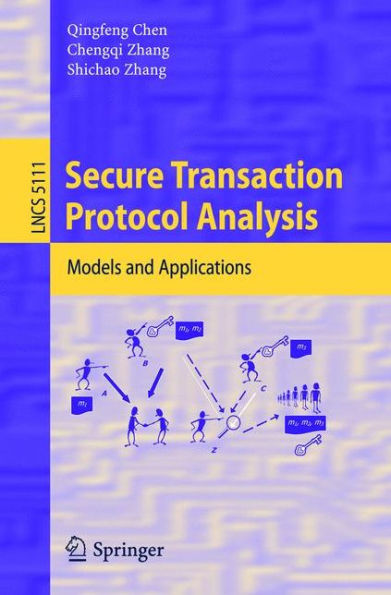Secure Transaction Protocol Analysis: Models and Applications
The application of formal methods to security prool analysis has attracted increasing attention in the past two decades, and recently has been sh- ing signs of new maturity and consolidation. The development of these formal methods is motivated by the hostile nature of some aspects of the network and the persistent efforts of intruders, and has been widely discussed among - searchers in this field. Contributions to the investigation of novel and efficient ideas and techniques have been made through some important conferences and journals, such asESORICS,CSFW andACM Transactions in Computer Systems. Thus, formal methods have played an important role in a variety of applications such as discrete system analysis for cryptographic prools, - lief logics and state exploration tools. A complicated security prool can be abstracted as a manipulation of symbols and structures composed by symbols. The analysis of e-commerce (electronic commerce) prools is a particular case of such symbol systems. There have been considerable efforts in developing a number of tools for ensuring the security of prools, both specialized and general-purpose, such as belief logic and process algebras. The application of formal methods starts with the analysis of key-distribution prools for communication between two principals at an early stage. With the performance of transactions - coming more and more dependent on computer networks, and cryptography becoming more widely deployed, the type of application becomes more varied and complicated. The emerging complex network-based transactions such as—nancial transactionsand secure groupcommunication have not only brought innovations to the current business practice,butthey alsoposeabigchallenge to protect the information transmitted over the open network frommalicious attacks.
1111360189
Secure Transaction Protocol Analysis: Models and Applications
The application of formal methods to security prool analysis has attracted increasing attention in the past two decades, and recently has been sh- ing signs of new maturity and consolidation. The development of these formal methods is motivated by the hostile nature of some aspects of the network and the persistent efforts of intruders, and has been widely discussed among - searchers in this field. Contributions to the investigation of novel and efficient ideas and techniques have been made through some important conferences and journals, such asESORICS,CSFW andACM Transactions in Computer Systems. Thus, formal methods have played an important role in a variety of applications such as discrete system analysis for cryptographic prools, - lief logics and state exploration tools. A complicated security prool can be abstracted as a manipulation of symbols and structures composed by symbols. The analysis of e-commerce (electronic commerce) prools is a particular case of such symbol systems. There have been considerable efforts in developing a number of tools for ensuring the security of prools, both specialized and general-purpose, such as belief logic and process algebras. The application of formal methods starts with the analysis of key-distribution prools for communication between two principals at an early stage. With the performance of transactions - coming more and more dependent on computer networks, and cryptography becoming more widely deployed, the type of application becomes more varied and complicated. The emerging complex network-based transactions such as—nancial transactionsand secure groupcommunication have not only brought innovations to the current business practice,butthey alsoposeabigchallenge to protect the information transmitted over the open network frommalicious attacks.
54.99
In Stock
5
1

Secure Transaction Protocol Analysis: Models and Applications
234
Secure Transaction Protocol Analysis: Models and Applications
234Paperback(2008)
$54.99
54.99
In Stock

Product Details
| ISBN-13: | 9783540850731 |
|---|---|
| Publisher: | Springer Berlin Heidelberg |
| Publication date: | 09/11/2008 |
| Series: | Lecture Notes in Computer Science , #5111 |
| Edition description: | 2008 |
| Pages: | 234 |
| Product dimensions: | 6.00(w) x 9.10(h) x 0.60(d) |
From the B&N Reads Blog
